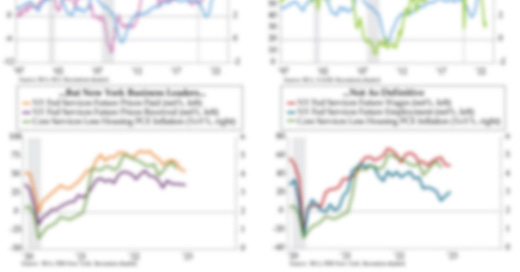Meet Dr. Emilio Lizardo
Over the past 60 years, the American actor John Lithgow has redefined prolific. Among his accolades: two Golden Globe awards, six Emmy awards, three Screen Actors Guild awards, two Tony awards and nominations for two Academy and four Grammy awards. A QI favorite is decidedly obscure. Lithgow portrays Italian scientist Dr. Emilio Lizardo in the 1984 sci-fi parody The Adventures of Buckaroo Banzai Across the Eighth Dimension. In the film, Dr. Lizardo and colleague Professor Hikita devised technology to allow humans to pass through solid matter. Lizardo designated himself to be the first to attempt such a feat. Alas, his enthusiasm got the best of him -- he only partially passed through a wall to the eighth dimension. There he was grabbed by aliens and possessed by the evil John Whorfin, after which he returned to Earth and “appeared” to go insane.
This lesser-known Lithgow role came to mind yesterday because of a scene in which Dr. Lizardo hooks himself up to a crude electric shock mechanism and has a flashback of his transformation from an Italian scientist to an evil alien leader with an Italian accent. A shock of another kind has continued to unfold in the rate space. Thirty-year mortgage rates rose to 5.30% in the week ended May 12, according to Freddie Mac. The last time these fixed borrowing costs for homes were this high was in the wake of the emerging recovery from the Great Recession in the spring of 2009. Since the turn of the calendar to 2022, mortgage rates have reversed more than a decade of cheap financial conditions in the span of less than five months.
It’s a mortgage rate shock of historic proportions. To illustrate, we dialed down the frequency to quarterly from weekly and normalized past comparisons using a year-over-year (YoY) change. The current Freddie Mac level stands 2.36 percentage points above a year ago (inverted blue line). The exercise revealed that there are only two other episodes when mortgage rates rose this quickly over a four-quarter timeframe. In both cases, they occurred at the onset of recession in 1980 and 1981, respectively.
Like John Lithgow’s unquestioned acting capacity, there’s a sure amount of certainty for what comes next. Housing recession probability is rising as are markdowns for residential investment in the outlook for U.S. GDP. Yesterday’s April housing starts and building permits report had residual gray area. But a decided divergence between multifamily and single-family sectors has opened, with the former outperforming the latter.
Most telling is that supply is rapidly catching up with demand on the single-family front. As QI’s colleagues at Zelman & Associates noted, “April’s seasonally adjusted annualized pace of 1.001 million completions is just one of six months above one million since 2008, with four of those occurrences in the last five months.”
As for the white-hot multifamily sector, year-to-date permits are up 13% YoY, pacing at the highest since 1986. At the same time, “Extended construction cycles and unabated optimism on incremental development continues to result in swelling backlogs, which increased for the ninth consecutive month to the highest level since 1974 and are up 22% YoY. While there is some speculation that this supply burden will be released slowly, the magnitude of the pipeline remains a notable concern of ours ahead of what appears to be an economic slowdown.”
The National Association of Home Builders (NAHB) May Housing Market Index flagged the flipside of “unabated optimism.” Near-record declines were evident in this year’s first five months in both headline components. Homebuilder sales expectations over the next six months were plain ugly, tumbling 22 points in the five months ended May. Aside from the COVID shock, the only parallels are late-cycle nosedives in 1989 and 2006. And then there’s the 19-point decline in buyer traffic thus far this year; aside from the pandemic plunge, the current episode beats all other past cycles. Building permits, a varsity leading indicator, likely will succumb to the gravity of NAHB’s forward guidance as the balance of the year unfolds.
Ripple effects from the U.S. rate shock will be felt north of the border, an economy we see as more vulnerable to externalities. Canadian exports of consumer and intermediate goods are most at risk over the next year. Canada’s manufacturing PMI has already topped. Moreover, tighter monetary policy in the U.S. targets slower growth and lower inflation in the interest-rate sensitive sectors of autos and housing where the inflation has been the most acute. Because Canada has sizable exposure through trade channels, an export slowdown that hits the factory sector is in train. Canadian forecasters should be waxing bearish on export prospects.
Weakness has already emerged in Canada’s forestry products, which account for more than 7% of exports. Volumes in 2021’s fourth quarter dropped by 1.7% year-over-year and extended into 2022’s, which clocked an annual decline of -2.4% (purple line). Additional fallout in coming months and quarters should be discounted.
We quirkily return to Dr. Lizardo, who literally had a shocking disconnect with reality in Buckaroo Banzai. His jolt pales in comparison with the Canadian dollar’s weakening in the face 2022’s runup in oil prices. Foreign exchange (FX) traders are sniffing Canadian weakening as central banks on both sides of the border have guided to parallel tightening campaigns to snuff out inflation. The Fed’s export of tighter financial conditions should have more FX players shorting Canadian dollar.



